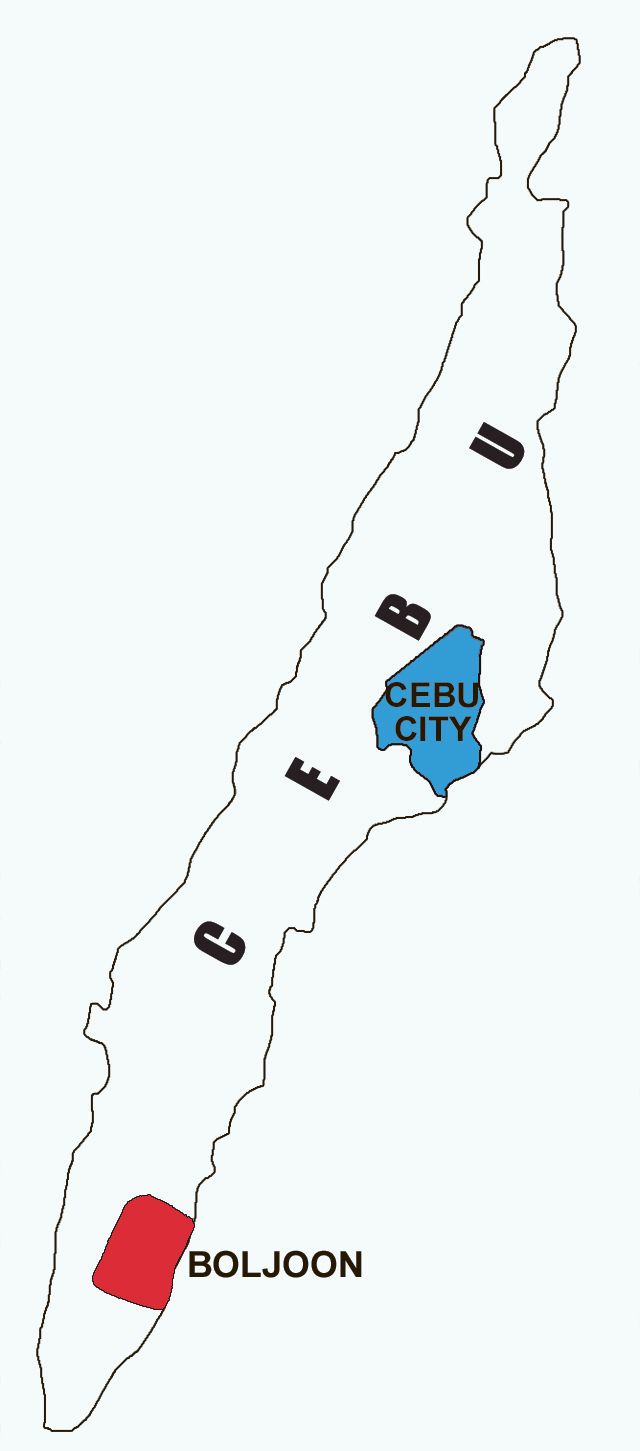Fault line movement in Boljoon causes landslide, endangers town
 Close to a hundred persons were evacuated from a village in Boljoon town that is now considered a high-risk area following a landslide that occurred last Friday caused by a movement in the town’s fault line.
Close to a hundred persons were evacuated from a village in Boljoon town that is now considered a high-risk area following a landslide that occurred last Friday caused by a movement in the town’s fault line.
Officials said operations were now underway to clear a dam that was created after rocks, debris and uprooted trees blocked the flow of a river in Sitio Sangi of Barangay Lower Becerril, which could potentially cause flooding in the town proper if water current is not eased .
The Municipal Disaster Risk Reduction Management Office (MDRRMO) of Boljoon, a fifth-class municipality more than 105 kilometers southeast of Cebu City, reported that the landslide was caused by a slight movement of a fault line present in that area, which cuts across Barangay Lower Becerril.
The movement of the fault line on Friday, October 27, prompted the municipal government to evacuate close to 100 residents, or at least 11 families, to the town’s sports complex in Barangay Poblacion.
Provincial Disaster Risk Reduction Management Office (PDRRMO) chief Baltazar Tribunalo told Cebu Daily News in a phone interview yesterday that heavy equipment have been deployed to deepen and widen the waterway to spread pressure equally in order to buffer the possibility of the dam to break and release a perilous volume of water.
As of Sunday, the water level of the river, which has a width of 30 meters and spans up to 10 kilometers, has increased from its average height of four meters to 10 meters, according to Tribunalo.
“Two backhoes from the local disaster team of the Municipality of Boljoon, and from the provincial government were already there to deepen the riverbed and to create a wider waterway to spread pressure equally,” said Tribunalo.
“If the water breaks loose, it will result to flash flood which can reach Barangay Poblacion in a few minutes. But hopefully it will not happen. We’re confident it will not happen because the clearing operations have started,” he added.
He said they also planned to break the dam with the use of explosives.
“There will be an artificial bombing because the water keeps rising. The river water keeps flowing while its outlet was blocked,” he added.
Clearing operation
Boljoon’s MDRRMO acting chief Eutemio Ternate, in a separate interview, said they had been working round the clock since Saturday to get rid of the trees and rocks that formed the natural dam.
He said they were hoping that it would not rain in the next coming days so as not to add to the water already impounded in the blocked river.
Data from the municipal and provincial disaster response offices showed there were 30 houses that stood several feet away from the dam, and were identified to sit atop the crack made by the fault line.
No damage was reported on the houses following last Friday’s landslide. But they were deemed unfit for occupancy since the fault line is active and the dam still pose as a danger, said Tribunalo.
“When the fault line moved, the crack on the ground is now bigger. Until now, the land keeps moving so the 11 families living in these houses were told to evacuate not only because of the fault line but also of the nearby dam,” explained Tribunalo.
He said they contacted the Mines and Geosciences Bureau of the Department of Environment and Natural Resources in Central Visayas (MGB-7) to provide them more information and recommendation on the active fault line.
“We’re expecting personnel from the MGB–7 to respond to the area anytime soon. But in the meantime, we already talked with the local chief executive of Boljoon, Mayor Merlou Derama, together with their vice mayor, Ervin Villanueva, to help us urge the evacuated residents not to return yet to the area,” said Tribunalo.
Cebu’s fault lines
Data from the Philippine Institute of Volcanology and Seismology (Phivolcs) revealed there are three fault lines that cut across 17 areas in Cebu.
One is reported in central Cebu, covering the cities of Cebu, Naga, Danao, Mandaue, Talisay, Toledo and the towns of Balamban and Compostela.
While the remaining two were opposite each other in southern Cebu, volcanologists found traces of them in the towns of Oslob, Ginatilan, Boljoon, Alegria, Alcoy, Argao, Dalaguete, Minglanilla and Malabuyoc.
Areas close to fault lines are prone to earthquakes and slight movement in the land, such as landslides and rock slides.
During his visit in Cebu last July, Phivolcs Director Dr. Renato Solidum Jr. urged local government units and disaster response teams to be always prepared to respond to any possibilities of earthquakes emanating from the fault lines found in the province.
Disclaimer: The comments uploaded on this site do not necessarily represent or reflect the views of management and owner of Cebudailynews. We reserve the right to exclude comments that we deem to be inconsistent with our editorial standards.
